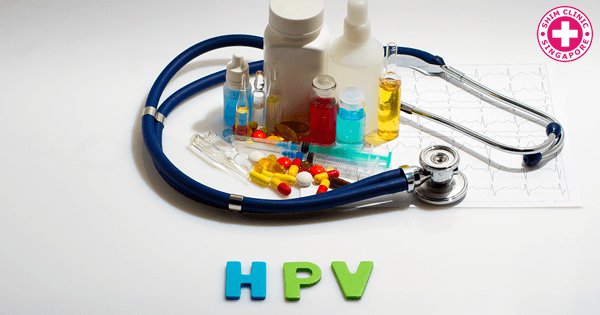HPV Description
HPV in full is known as human papillomavirus. It is a collection of many different viruses that are transmitted during sexual contact affecting the skin and lining of the body that are moist such as the mouth, throat, cervix and/or anus. The virus has an average of 150 strands of which 40 affect the genitals. An infection of this virus increases the risk of the infected individual to contract cancer.
The infection is common and the same time contagious. It affects those who are sexually active and can infect them at any point in their life. Some infections may go away without treatment while others need treatment.
What happens if the HPV infection does not go away?
The STI causes two main health problems:
- Genital Warts – They usually manifest themselves in the form of a small bump in the genital area. Sometimes the bumps can be more than one. They differ in appearance (flat or cauliflower shaped) and in size (small or large). They may be found on the penis, scrotum or around the penis in men and in the vagina in women.
- Cancer – A person can take years after a HPV infection for him/her to develop cancer. They can be cervical cancer, cancer of the vulva, penis and anus. There is no sure way to know who will develop cancer after a HPV infection. However, adolescent girls are given a HPV vaccine to prevent any cancers that may develop into cervical cancer. Also, women between the age of 25-65 are encouraged to go for cervical cancer screening annually to check for abnormal cells that may cause the cancer.
It is important to note that the virus portrays itself in one of the two ways above. It does not have more specific symptoms hence making it difficult for an individual to know whether they have the infection or not.
What diagnosis is there for the sexually transmitted disease?
If a person has genital warts, a health practitioner at any STD testing center can diagnose the infection simply through visual inspection. However, other tests include:
- Pap smear– this is a test done on women in the cervix to check for any chance of abnormal cells in the area.
- DNA test– This is done alongside a pap smear for women who are 30 and older.
- Use of acetic acid (vinegar)- used to show any lesions that cannot be easily detected
Is there a cure for HPV infections?
There is no distinct treatment for the virus itself but there are treatments for the health problems caused by the infection.
- Genital warts. They sometimes go away on their own but not always. If not, a health practitioner may prescribe medicine for treatment. In other cases, the warts may be destroyed through freezing, heating or through their removal. There are also creams available for application for the same.
- Cancers– the best way to treat the cancers is by frequently going for testing and diagnosing them early before they develop to the later stages.
Is the Sexually Transmitted Disease Preventable?
Yes it is. The only sure way to prevent it is through abstaining from sexual interactions. However, when you do decide to engage in such activities, it is highly recommended that you use protection.
It is also important to go for a full STD screening at any STD clinic to ensure that you are not at risk of an infection or infecting your sexual partner.
There are studies showing the co-infection of both HPV and HIV where interactions between the infections at the molecular levels and then the cellular levels increase the ease of aquiring and amplifying the effects of each virus. So we do advice getting tested for HIV and if there was suspected exposure to HIV within the last 72 hours, do talk yo your doctor about the HIV PEP treatment to prevent the HIV infection from taking place.


Pingback: Critical Effects of Common STDs